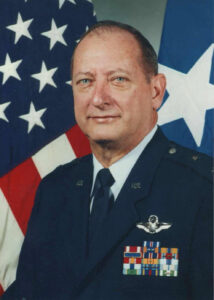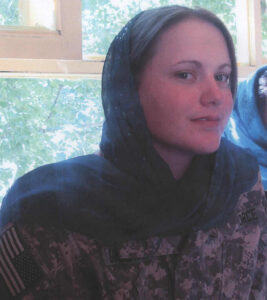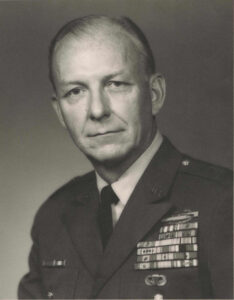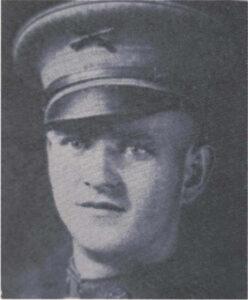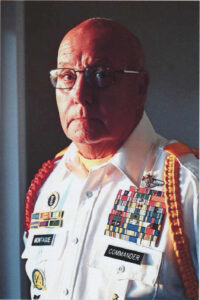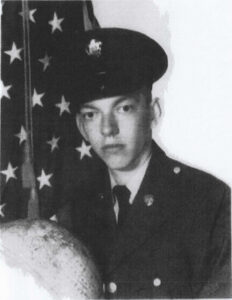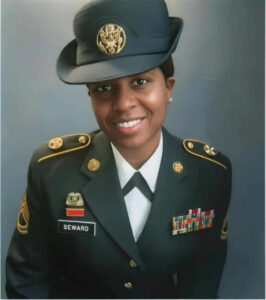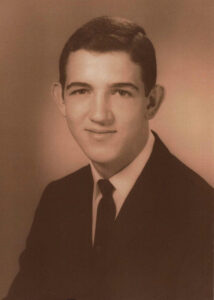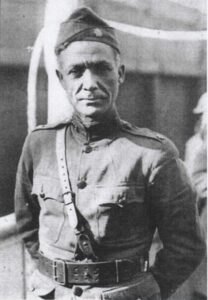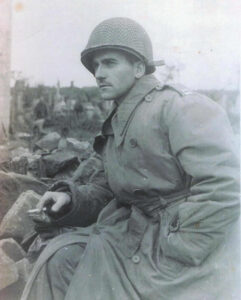Dr. Joseph Alford
Dr. Joseph Alford epitomizes the role and value of America’s veterans to our communities, churches and fellow veterans, long after their uniformed service comes to an end. Following two deployments to Vietnam on the aircraft carrier USS Coral Sea during the Vietnam War, then-Lieutenant JG Alford completed his active naval service having received the Navy Unit Commendation Medal twice and being recognized for his service with the Vietnam Campaign Medal, Vietnam Service Medal and the National Defense Service Medal.
Transferring to the Naval Reserve, Lt. Alford took it upon himself to obtain unused equipment salvaged from decommissioned ships and install it in Reserve Centers, thereby providing land-based sailors the closest thing to real-world experience in ship bridges, engine rooms and damage control stations. His naval service culminated with duty as the Executive Officer of the Indianapolis Naval Reserve Center, coinciding with his increasing level of responsibility at Eli Lilly & Co. Having earned his Masters Degree and Ph.D in Chemical Engineering from the University of Cincinnati, Dr. Alford served as the Head of Bioprocess Automation and Advanced Process Technologies company-wide, even as he continued his life of service. He ended his Lilly career as an Engineering Advisor.
He remained actively engaged in his community, volunteering hundreds of hours of his time and expertise to Habitat for Humanity, the Wounded Warriors Project, United Way and countless other civic organizations. He advocated for the hiring of qualified veterans at Eli Lilly, and supported and participated in many of the activities of the Navy ROTC program at Purdue University. Dr. Joseph S. Alford’s nominator wrote of him, his “dedication to serving others, both in and out of uniform, exemplifies the values of honor, integrity and selflessness that are the hallmarks of our nation’s military veterans.”
James (Jim) Robert Arnold
The Honorable James (Jim) Robert Arnold has unselfishly supported his country, community, and veterans for more than fifty-two years. He began his military service in the Air Force in 1963 as an Air Traffic Controller and was released from active duty in 1967. He went on to serve with the LaPorte County Sheriff’s Office for 32 years, including eight years as the elected Sheriff. He remained in the Ready Reserve with the U.S. Air Force and subsequently the U.S. Army until 1985.
Mr. Arnold continued his public service after retiring as Sheriff in 2005 by serving 10 years in the Indiana Senate, representing La Porte, Indiana, where he served on the Senate Homeland Security, Transportation, and Veterans Affairs Committees. He continued to serve his community on the La Porte School Board beginning in November 2016, making positive contributions to the local school system through his support of education initiatives. Jim also serves on several local religious, civic and veteran organizations within LaPorte County.
His passion and his commitment to the community he loves dearly, makes Jim Arnold a public servant everyone can count on. He shows no signs of slowing down as he continues to do incredible work for the La Porte and Northwest Indiana community.
Boyd L. Ashcraft
Boyd L. Ashcraft was commissioned as a Second Lieutenant from Purdue University Air Force ROTC in 1964. He earned the Distinguished Flying Cross as a First Lieutenant in 1967 for heroism while participating in aerial flight as a pilot with the 11th Tactical Reconnaissance Squadron flying over North Vietnam from Udorn Royal Thai Air Force Base. Then 1LT Ashcraft, completed 120 combat missions of which 100 were over North Vietnam.
After returning to the United States in 1967, Ashcraft served as an instructor pilot for 3 ½ years preparing aviators for service in peace and war. After transitioning from active duty in 1970, he continued to serve in the Air Force Reserves for 30 years in numerous command positions stateside and outside the United States, attaining the rank of Major General. He has more than 5,000 flight hours in four different aircraft.
During his time as the Mobilization Assistant to the Commander of Air Education and Training Command, he was the driving force behind the Air Force Reserve Command Instructor Pilot Program where Reserve instructor pilots helped over-burdened active-duty forces train pilots, a program which is still used today. After retirement from the Air Force Reserve in 2000, General Ashcraft was a volunteer driver for the Disabled American Veterans (DAV) for 15 years, transporting veterans to medical appointments while contributing countless hours assisting fellow veterans receive appropriate Veterans Administration benefits. He also served for over 37 years as a commercial airlines pilot, was inducted into the Indiana Aviation Hall of Fame and the Purdue University ROTC Hall of Fame, served four years as a board member for the Grissom Air Museum, and supports the Military Officers Association of America, the Veterans of Foreign Wars, American Legion, Air and Space Forces Association, and Red River Valley Fighter Pilot Association.
Gonzales Calloway Sr.
Gonzales Calloway Sr had a distinguished military career spanning 24 years and retired as a First Sergeant. He served as an Army recruiter for 15 years, receiving countless accolades for his outstanding recruiting efforts. But even more outstanding is his remarkable impact upon the Indianapolis community after retirement. He continued his dedication to our nation by transitioning into inner-city education as a JROTC instructor within the Indiana Public Schools. His impact upon the lives of these young people is a testament to his dedication to fostering leadership, discipline and patriotism in future generations.
After retiring from the IPS system, he continued by volunteering with various community based and veteran organizations, demonstrating a genuine commitment to serving veterans and their families. His leadership as commander of AMVETS Post 99 is particularly noteworthy, as the post grew from over 300 to nearly 700 members in just three years under his guidance. He served with AMVETS for more then 20 years at both the post and state level.
First Sergeant Calloway currently serves as Vice Commander of the National Association for Black Veterans, Indianapolis Chapter. His support extends to various causes such as Special Olympics basketball and bowling tournaments, food distribution ministries, and volunteering at the Indiana Veterans Home. He is an active participant in events supporting hospitalized veterans at the Richard L. Roudebush VA Medical Center, as well as supporting local veteran parades, celebrations, outreach and legislative events. He also spearheads the Veteran’s Day celebration at Friendship Missionary Baptist Church, a testament to his commitment to honoring the sacrifices and contributions of veterans.
Calloway is married to 1SG (retired) Aletha Calloway, who herself was inducted into The Indiana Military Veterans Hall of Fame in the class of 2024. They are the first husband and wife team to be inducted into the Hall of Fame.
George Rogers Clark
George Rogers Clark is best known for his leadership in the Illinois Campaign of 1778. During this Campaign, his daring tactics and bold leadership led to the capture of a key British outpost in what is now the Indiana City of Vincennes, His surprise march through harsh winter conditions to recapture Ft Sackville is widely regarded as one of the more significant military feats of the Revolutionary War. The strategic and symbolic importance of General Clark’s victories cannot be overstated, as they helped lay the foundation for American expansion westward and Clark’s actions had a direct impact on the future of Indiana. Supreme Court Justice John Marshall commented the following about General Clark: “Clark exhibited a courage that was the very embodiment of the American Spirit —- undaunted in the face of danger, driven by a vision for the nation’s expansion.” George Rogers Clark’s legacy of valor and leadership during the Revolutionary War has been recognized in so many ways: the George Rogers Clark Memorial in Vincennes that was dedicated in 1936, numerous Indiana counties and schools named after him, the Indiana quarter depicting Clark leading his men through the flooded plain approaching Ft Sackville, as well as numerous statues and sculptures throughout the United States. It is only fitting that we recognize George Rogers Clark’s valor and military leadership, which many historians credit for the acquisition of the Northwest Territory. His actions helped lead to the creation of the 19th State of the United States – Indiana.
James Richard Endress
Lieutenant Colonel James Endress was an ordained Catholic Priest whose education, experience and love of country led him to serve with courage and distinction as an Army Chaplain for nearly 16 years.
Following his education in St. Meinrad Seminary and Innsbruck, Austria, Father Endress served as a parish priest and high school teacher for five years. After many conversations with former students returning from the war in Vietnam, he was moved to enter military service.
His training with the 82nd Airborne Division led him to service in Vietnam as a chaplain, where he accompanied platoons of combat soldiers into battle and teams of Special Forces troops into remote areas of South Vietnam.
Chaplain Endress provided spiritual support, counseling and moral guidance to troops in the field, offering comfort and spiritual strength to wounded and sometimes dying troops. He actively participated in 25 aerial missions over hostile territory, earning the Army Air Medal, and was subsequently awarded the Bronze Star, the Meritorious Service Medal, and the Army Commendation Medal – each with two oak leaf clusters.
Father Endress’ military career ended in an automobile accident at Fort Campbell, Kentucky. With characteristic resolve, he overcame the resulting physical limitations and returned to his hometown, where he was revered and served the Evansville Diocese for the next 41 years in a variety of capacities.
In the words of his nominator: “With a cross on his helmet and flak jacket on his back, Father Endress was a lifeline for service members coping with the horrors of war, separation from family and the pressures of military life.”
Ashton Lynn Marie Goodman
Senior Airman Ashton Lynn Marie Goodman was born at Beale Air Force Base, raised in Indianapolis and graduated from Warren Central High School. She enlisted in the US Air Force in July 2006, continuing a proud family tradition as the 3rd generation of women to serve. Ashton’s story is one of a young woman who answered her nation’s call, served with distinction in the most challenging circumstances, and paid the ultimate
price for freedom.
Even as a Senior Airman, she was recognized as a combat-experienced driver on the Panjshir Provincial Reconstruction Team in Afghanistan. Having already completed a previous deployment to Iraq, she brought invaluable experience to her team and her noncommissioned officers consistently sought her tactical advice. Airman Goodman served as a primary tactical driver on 130 combat logistical patrols logging over 8,000 miles in supporting the construction of a $28 million road connecting Panjshir to the neighboring provinces.
Airman Goodman was a key player in Woman’s Affairs missions, helping establish some of the first women-owned businesses in the Province, and spending time mentoring the women of Afghanistan. One of her last humanitarian missions was delivering much-needed food and supplies to more than 100 women in distant villages. Her dedication to helping others, particularly women in a challenging environment, demonstrated the very
best of American values and Indiana character.
On May 26, 2009, Airman Goodman was on a tactical convoy mission from Forward Operation Base Lion to Bagram Airfield when her vehicle was directly targeted and struck by an Improvised Explosive Device, mortally wounding her. She was recognized with a Bronze Star Medal for heroic actions and unselfish dedication to duty in the service of her country. Her legacy lives on in a scholarship at Warren Central High School. In 2024 the Airman’s Center at Pope Army Air Field was dedicated in her name.
Clifford Pershing Hannum
Clifford Pershing Hannum, Brigadier General (Retired), was born in Lyons, Indiana, and graduated from Arsenal Technical High School in 1936. He attended Indiana University ROTC program and, upon graduation, was commissioned a Second Lieutenant with the Infantry Branch in the U.S. Army Reserves in February 1941. He was assigned to the 32nd Infantry Division during World War II, fighting battles from Papua New Guinea to the Philippines.
He was awarded the Silver Star for conspicuous gallantry and intrepidity against a Japanese enemy near Buna, New Guinea, on December 29, 1942. Subsequently, he earned two Bronze Stars for combat actions during the liberation of the Philippines with five campaign stars and an arrowhead.
He was demobilized after World War II, only to reenter active duty with the U.S. Army in 1949. His service included assignments in Germany, U.S. Strike Command, and the Office of the Joint Chiefs of Staff in the European Middle East Division. After the Korean conflict, he served as G3 Operations in the Korean Military Assistance Advisory Group, and in Vietnam, he served at 1st Field Force Headquarters in Na Trang as the assistant chief of staff G3 Operations. He retired as Assistant Division Commander of the 2nd Infantry Division in Korea in 1973.
Brigadier General Hannum also received the Distinguished Service Medal with Oak Leaf Cluster, Legion of Merit with two Oak Leaf Clusters, Air Medal, Army Commendation Medal, Combat Infantry Badge, and numerous service and campaign medals.
Bryan J. Hult
Brigadier General Bryan J. Hult enlisted in the United States Army in 1978 as an infantryman after graduating from the University of Minnesota. After completing airborne school and Officer Candidate School, he was accepted into Rotary Wing Flight training where he graduated with honors. He served four years at Fort Hood, TX with the 2nd Armored Division in positions at Company, Battalion, and Brigade level before choosing to attend Seminary to become an Ordained Minister and Army Chaplain.
He moved to Indiana in 1993, and joined the Indiana National Guard and put his time in infantry and aviation to great use as a Chaplain in a multitude of positions with the Indiana National Guard earning three Meritorious Service Medals, numerous other military awards, and recognition as an Indiana Sagamore of the Wabash. His service in the Indiana National Guard continued from 1993 to 2006, and upon promotion to Brigadier General, he served until September 2010 as the Army National Guard Assistant to the U. S. Army Chief of Chaplains. His chaplaincy to Guardsmen and their families during the height of National Guard personnel deployments to the Middle East in support of combat operations for Operations Iraqi Freedom and Enduring Freedom ensured improved services as they mobilized, deployed, and returned home from combat.
Following retirement, Chaplain Hult continued his service to fellow military members as a Veteran Service Officer in his retirement home of Bonner County, Idaho, where he led a team from 2015 to 2023 which regularly met with 100 veterans each month assisting with disability claims, medical and burial benefits, and compensation claims. Further, he helped facilitate with the Veterans Administration in the building of a new Veterans Medical Clinic in Sandpoint Idaho. Chaplain Hult’s veteran’s advocacy continues with his local VFW and American Legion along with numerous speaking engagements with the Marine Corps League, honors at military funerals, military reunions, and state conventions.
Leslie Albert McPike
Not all American military heroes are memorialized in the annals of our nation’s history, or embedded in the memory and lore of our culture. Most of them live quiet lives, their deeds known only to a few and their graves visited by the ever dwindling number of friends and family who loved them. Tonight we honor one such American hero, a humble Hoosier who returned to Indiana from the “War to End All Wars” highly decorated and determined to live the life he fought so hard to defend.
His name is Leslie Albert McPike, born and raised in Bedford, Indiana. He earned his place in the Indiana Military Veterans Hall of Fame as a Sergeant in the American Expeditionary Forces’ Third Division Machine-Gun Battalion. He came home to Bedford war-weary and bearing three of the highest combat awards a soldier can earn — two Silver Stars and the Distinguished Service Cross.
Sergeant McPike was honored for “extraordinary heroism in action” in France on October 22, 1918. The War Department’s General Orders 89, awarding him the Distinguished Service Cross, says “having been sent with his section to defend a difficult position Sergeant McPike succeeded in breaking up a hostile counterattack, though his ammunition was exhausted in so doing. Shortly afterwards, when another counterattack was made against him, he and his men heldoff the enemy with their pistols, though the Germans had closed in from three sides. Their courageous stand checked the enemy until fresh ammunition could be brought up, whereupon the hostile attach was completely repulsed.”
This Distinguished Service Cross was accompanied by a second Silver Star, matching
perfectly his first, earned only two months prior, for “maneuvering his guns so successfully that he lost neither men nor guns, though his original positions and surrounding fortifications were completely destroyed.”
Ronald David Montague
Ronald David Montague is a veteran with a servant’s heart. The Military and Veterans Community has benefited greatly from his leadership and perseverance of duty beyond his initial service in the US Air Force during the Vietnam War, where he received the Bronze Star, Presidential Citation, and numerous other awards. He later joined the Indiana National Guard where he rose in rank to 1SG.
First Sergeant Ron Montague continues with his outstanding leadership as the Commander of the all-volunteer Indianapolis Metropolitan Military Honor Guard. His team has performed over 3900 funeral missions presenting military honors, and an estimated 150 Color Guard events in the Indianapolis and Central Indiana community. His love of family, and respect for families who have been left behind by their loved ones is extraordinary. They count on him to conduct that final mission of honor.
From the 21-gun salute, folding and presentation of the United States flag, and finally the rendering of TAPS, his impeccable direction of the team and his steadfast compassion mean everything to a grieving family.
Ron goes above and beyond when requested to complete a mission. He pays attention to every detail, assists in guiding the families and community event organizers, in the proper way to hold service and the precision presentation of a color guard. His confidence and assurance help relieve families of the burden that their loved one will be entirely honored with reverence and that their sacrifice will never be forgotten.
Dale L. Padgett
Sergeant Dale L. Padgett was awarded the Army Commendation Medal with V for heroism during the period 2 – 4 July 1970 in the Republic of Vietnam. He distinguished himself by expertly leading a reconnaissance mission which gathered critical intelligence on enemy positions and contributed directly to a successful search and destroy mission against hostile forces.
He earned a second Army Commendation medal for valor during the period 12 – 14 August 1970 while serving as squad leader under intense enemy fire demonstrating a complete disregard for his own safety, where he provided suppressive fire and directed his unit to a safer position which allowed air support.
Further, he distinguished himself in numerous ground combat operations earning the reputation as the point man of choice. Sergeant Padgett earned the Bronze Star with one Oak Leaf Cluster for meritorious achievement during ground combat operations in Vietnam during 1969 – 1970 while serving as a light infantryman, squad leader, and point man for his company. A fellow solder from Dale’s company in Vietnam shared that he sure was glad he was not in Dale’s platoon because that platoon was always picked for the hard and dangerous missions.
As a civilian, Dale continued his service to the nation for over 23 years at Naval Support Activity Crane, Indiana and is a life member of the VFW, American Legion, and the First Cavalry Division Association. Dale has shared his service memories in the Veterans History Project and is a pillar in the community, having served as a Board Director for over 27 years on the Crane Credit Union serving over 64,000 members.
Dana J.H. Pittard
Major General Dana J. H. Pittard was awarded the Bronze Star for Valor as a Captain in 1991 for combat actions in Desert Shield – Desert Storm. As an Armor Company Commander during a night armor fight on 26 FEB 1991 against a brigade of the Iraqi Tawakalna Republican Guard Division, CPT Pittard’s battalion 1-37 Armor (AR) of 3rd Brigade, 1st Armored Division (AD) had the lead to attack the brigade objective. 1-37 AR lost four tanks in the fight without any US Killed in Action (KIA) while decimating a force of Iraqi T-72 tanks. While under intense anti-tank and small arms enemy fire and continuing to engage enemy T-72 tanks, CPT Pittard maneuvered his tank through and seized the objective and coordinated the rescue of the wounded tank crews that had been struck and disabled by enemy fire. MG Pittard progressed through the ranks and served a 34 year + career with distinction. He served as the Military Aide to the President carrying the nuclear football and serving the President from late 1996 to January 1999.
As Commander of 3rd Brigade 1st Infantry Division, he deployed his brigade to Iraq (2004-2005). After stabilizing the Iraqi province of Diyala he went back to Iraq in 2006 – 2007 in his first General Officer (GO) position as the Commanding General (CG) of the Iraq Assistance Group (IAG) where he had oversight of all American and Coalition advisory teams. General Pittard served in numerous General Officer positions to include CG of Ft Irwin and the National Training Center, CG 1st Armored Division and Fort Bliss, Deputy CG Army Central Command, and the first CG Joint Force Land Component Command-Iraq (JFLCC-I) in 2014. Under his leadership, his command stopped the ISIS offensive juggernaut with an 80 percent senior ISIS kill rate placing ISIS on the strategic defensive. MG Pittard is a co-author of a book about America’s War on ISIS.
Rhonda Seward
Rhonda M. Seward, Sergeant First Class (Retired), entered the U.S. Army in 1996. She has more than 20 years of distinguished military service, including a deployment with Operation Iraqi Freedom. She is a tireless veteran’s advocate and respected community leader whose life is a shining example of service, sacrifice, and leadership.
Following her retirement from active duty, SFC Seward continued her mission of service with unwavering passion. As a Peer Support Specialist, she has worked directly with the homeless and disabled veterans, guiding them through recovery, reintegration, and healing. Her roles as a Veterans Court Mentor further reflect her commitment to helping justice-involved veterans find stability, purpose, and hope.
She has testified before the Indiana State Legislature on critical veteran issues and continues to be a powerful voice for those who have served. Her leadership roles include Public Affairs Officer for AMVETS Post 99 and Commander of NABVETS Chapter 0133, where she helps shape and strengthen the veteran support network throughout Indiana. Her veteran advocacy also includes service with the Patient Advisory Council at Roudebush VA Medical Center.
In addition to veteran advocacy, she invests in future soldiers as the Junior ROTC instructor at Crispus Attucks High School in Indianapolis, where she teaches discipline, character, and leadership to the next generation.
John Wayne Sutton
John Wayne “Johnny” Sutton graduated from Center Grove High School in 1968, and soon afterwards, found himself in the Mekong Delta in Viet Nam. After three months, SPC5 Sutton was able to transfer to the 101st Division where his brother Harry was stationed.
While assigned to Camp Eagle with the 101st, the brothers found themselves flying missions together in the same Huey helicopter — Harry as a pilot and Johnny as a crew chief and gunner. To their best knowledge, they were the only brother team flying together. They flew on combat missions for nine months, including Medivac, emergency resupply, and supply missions throughout Vietnam, in situations where they took multiple enemy small arms fire and damage to their helicopter.
On one mission when they were not flying together, Johnny’s helicopter crashed into a remote village and all aboard were injured. Johnny, despite severe injuries to his shoulder, was able to free himself from the burning aircraft. The pilot was pinned in the wreckage, but SPC Sutton grabbed a pole from a local Vietnamese woman in a nearby rice paddy, and managed to pry the instrument panel from the pilot’s broken legs. He lifted the pilot out of the helicopter, and was able to drag him from the wrecked and burning aircraft. His pilot survived, despite amputations and multiple surgeries, and lived a good life until his death in 2023. SPC Sutton had surgery on his shoulder and was able to return to service as a Crew Chief, but was no longer allowed to fly together with his brother.
SPC John Sutton was awarded the Bronze Star Medal, but the Army failed to recognize him for his heroic act of September 3rd, 1969. Forty seven years later, the Army rectified this omission and in 2016, General Umbarger of the Indiana National Guard awarded SPC Sutton the Soldier’s Medal for Heroism.
Joseph Henry Ward
Lieutenant Colonel Joseph Henry Ward, an Indianapolis native and the first Black physician to serve as an officer in the Indiana National Guard, played a pivotal role in advocating for Black veterans following World War I. He earned his medical degree from Howard University and dedicated his life to breaking barriers in military service and healthcare.
Before his World War I service, he opened Ward’s Sanitarium in Indianapolis to perform medical treatment and surgery for African Americans who were denied procedures in area hospitals due to segregation and 19th-century social norms. During World War I, he served with the 92nd Infantry Division, one of the few African American units in the U.S. Army. Despite widespread discrimination, Ward’s leadership and medical expertise gained him respect among his peers and soldiers alike. After the war, he focused on supporting the often-overlooked needs of Black veterans, who faced systemic racism, limited access to resources, and exclusion from mainstream veteran organizations. He worked tirelessly to provide medical care and advocacy for these veterans, addressing issues such as war-related disabilities, mental health, and employment opportunities. He was appointed the Chief Medical Officer and Administrator of the segregated Veterans Hospital for Black veterans
of the Great War, which would later become the Tuskegee VA Hospital.
In August 2019, the State of Indiana dedicated a historical marker at the former site of Ward’s Sanitarium commemorating his achievements. The marker’s installation and dedication was possible due to the emotional, financial and physical support of Broad Ripple American Legion Post 3, the Tillman H. Harold American Legion Post 249 and members of the American Legion 11th District of Indiana.
William Edwin Waters
William Edwin Waters, born in Sullivan County, Indiana and raised in Indianapolis, was a 1943 graduate of the United States Military Academy at West Point. Within months of his graduation and further training at Fort Benning, Georgia, he was leading a company of the 83rd Infantry Division onto the bloody sands of Omaha Beach during the Normandy Invasion of the European mainland.
In several engagements on the battlefields of Europe following the invasion, he earned three Bronze Stars, the French “Croix de Guerre with Silver Gilt Star” and two Purple Hearts. Authorized after the war, the “V” Device for valor was added to his combat awards, which also included the Army Commendation Medal, the Combat Infantry Badge and numerous campaign and service medals.
But perhaps the most telling of his wartime exploits — and his character —
was the negotiated surrender of a camouflaged and heavily defended underground German fortress. Rather than risk the lives of countless American lives, Captain Waters, at great personal risk, opted to enter the fortress and negotiate with the German commander, who had sent out a request for medical assistance. The fortress was surrendered without bloodshed.
Following his wartime service he continued in an outstanding military career that included service as aide to famed General Mark C. Clark, a three-year stint as an instructor of English at West Point, and a variety of staff positions with the 32nd and 7th Infantry Divisions, the Continental Army Command, and the Caribbean Command Headquarters.
Lieutenant Colonel Waters was considered by his classmates at West Point to be, quote, “one of those rare human beings whose personal and professional qualities inspired such affection and respect as to serve us as a mark toward which to strive.”


